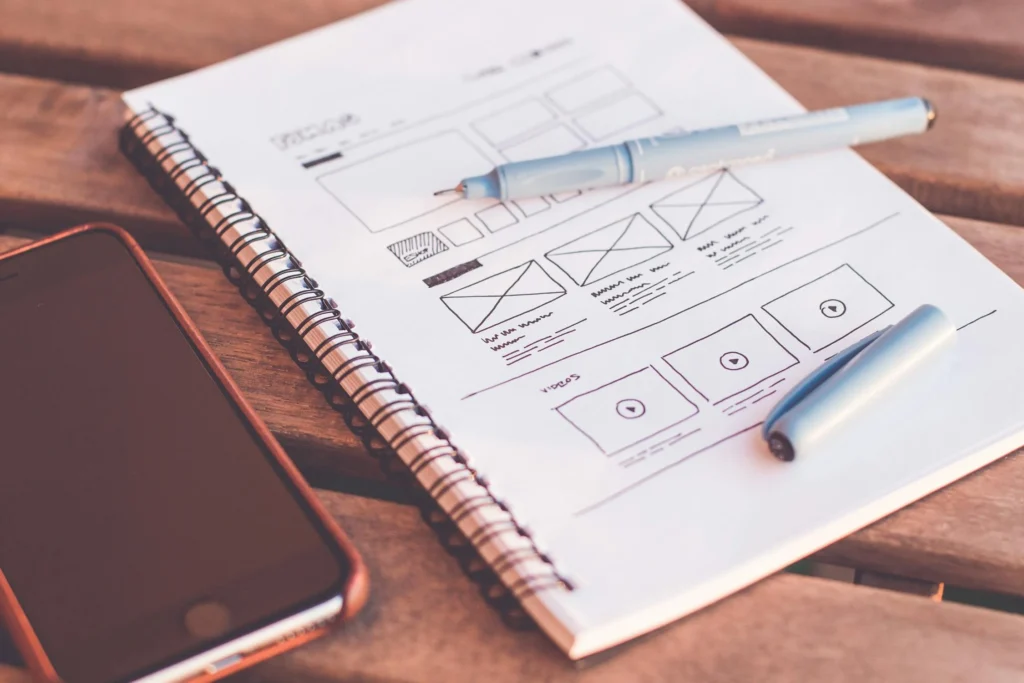
AWS Bedrock for LLM Implementation: Challenges and Benefits
Let’s dive into AWS Bedrock – what it does, how it does it, how it benefits businesses and some potential challenges, along with a few real-world use cases.

SaaS founders are no strangers to the pressures of launching a successful product. The stakes are high: time, resources, and capital are limited, and the market is unforgiving. To navigate these challenges, founders must employ methodologies that allow for rapid iteration and precise validation of their ideas.
Rapid prototyping offers a systematic approach to achieve this, enabling founders to refine their product concepts efficiently and effectively.
Before initiating any prototyping, it’s essential for SaaS founders to define what success looks like in measurable terms. This isn’t just about setting high-level goals; it’s about aligning every prototype iteration with specific, data-driven outcomes that drive strategic objectives.
Consider Jack, a founder aiming to disrupt the meal-planning SaaS space. His objective isn’t merely to gain users but to achieve a 20% subscription conversion rate within the first 6 months. This level of specificity is crucial for guiding the prototyping process, ensuring each iteration moves the product closer to a validated market fit.
For SaaS products, understanding market dynamics and user needs at a granular level is non-negotiable. Traditional market research methods fall short of the depth required to uncover actionable insights for SaaS founders. Instead of leveraging data analytics platforms and customer feedback loops, founders can derive precise insights into user behavior, pain points, and market gaps.
This isn’t just about validating the idea; it’s about refining the user experience to meet exacting standards. Founders must focus on gathering specific data points—such as user engagement metrics and feedback on UI/UX elements—during the market research phase. This data forms the backbone of the functional specifications that will guide the subsequent prototyping stages.
The journey of rapid prototyping begins with the creation of low-fidelity wireframes. These are not just simple sketches; they are the backbone of your product’s design and functionality. A well-crafted wireframe focuses on the fundamental structure of the product, mapping out user flows, interface layouts, and key functionalities without the distraction of aesthetic elements.
In the context of our meal-planning app, the low-fidelity wireframe would include basic layouts for the homepage, recipe selection screen, and user profile management. The goal is to establish a clear, functional flow that meets the core needs of the target audience—busy professionals looking for convenience in meal planning.
Low-fidelity wireframes are cost-effective and quick to produce and allow for rapid iterations. They enable teams to focus on functionality over form to ensure that the foundational elements of the product are robust before moving into more detailed design phases. This stage is crucial for identifying potential usability issues early on to reduce the risk of costly redesigns later in the development process.
Wireframes can be created using a variety of tools, with options ranging from simple sketches on paper to more detailed digital versions using software like Balsamiq or Sketch. The key is to remain agile. It allows swift modifications based on feedback.
Once the structural foundation is solidified, the next step is to transform these wireframes into high-fidelity prototypes. This stage is where the product begins to take on its final form with detailed UI design, interactive elements, and refined user flows. High-fidelity prototypes are more than just visual representations; they are functional models that simulate the end-user experience.
For the meal-planning app, the high-fidelity prototype would incorporate branding elements, color schemes, and detailed UI components such as interactive recipe selection and grocery integration features. The prototype would be used to test how users navigate through the app, how they interact with various elements, and whether the design effectively addresses their needs.
High-fidelity prototypes are instrumental in gathering in-depth user feedback.
Teams can conduct usability testing that yields valuable insights into user behavior and preferences by providing a realistic representation of the final product. This stage is critical for refining the product’s design and functionality. It ensures that the final product is not only user-friendly but also aligned with market expectations.
High-fidelity prototypes often require more advanced tools such as Figma, Adobe XD, or InVision. These platforms allow for the creation of interactive prototypes that can be tested in real-world scenarios. They provide a clear view of how the product will perform once it reaches the market.
The final stage in the rapid prototyping process is the development of a Minimum Viable Product (MVP). The MVP is not just a stripped-down version of the product; it is a carefully crafted solution that delivers essential functionalities to address the core problem while allowing for further iteration based on user feedback.
For the meal-planning app, the MVP might include essential features such as personalized recipe recommendations and grocery list generation, leaving more complex features like AI-driven meal suggestions or advanced nutritional tracking for future iterations.
The goal is to validate the product’s core value proposition in the market without overextending resources.
Developing an MVP allows teams to enter the market quickly and begin gathering real user data, which is invaluable for guiding future development.
The MVP helps to minimize risk and optimize resource allocation by focusing on the most critical features. This ensures that the product development process is both efficient and effective.
MVP development can be approached using a variety of platforms, from custom development to low-code solutions like Webflow or Bubble. The choice of platform should align with the product’s complexity and the speed at which the MVP needs to be brought to market.
In the competitive landscape of SaaS, the ability to validate product ideas quickly and cost-effectively is paramount. Rapid prototyping provides a structured approach to achieving this, from the initial low-fidelity wireframes that establish the product’s foundation to high-fidelity prototypes that refine the user experience, and finally, to the MVP that delivers the product’s core value proposition to the market.
This process not only optimizes the use of resources but also ensures that every step in the product development journey is aligned with user needs and market demands.
Our expertise lies in guiding companies through this intricate process, ensuring that every product we help bring to market is not only innovative but also strategically sound and resource-efficient. We provide the tools and insights needed to turn ambitious ideas into successful products by leveraging our deep industry experience and a keen understanding of market dynamics.

Let’s dive into AWS Bedrock – what it does, how it does it, how it benefits businesses and some potential challenges, along with a few real-world use cases.

Generative AI (Gen AI) is making waves across industries, and venture capitalists (VCs) are racing to fund the next big thing. By 2025, Gen AI is set to transform how we work, create, and solve problems. Let’s break down where the money’s flowing and why certain industries are stealing the spotlight.

Sales is competitive, there is a constant demand from the market to be better than your peers, especially in a B2B setup where businesses find new tactics & methods to outsmart the competition.